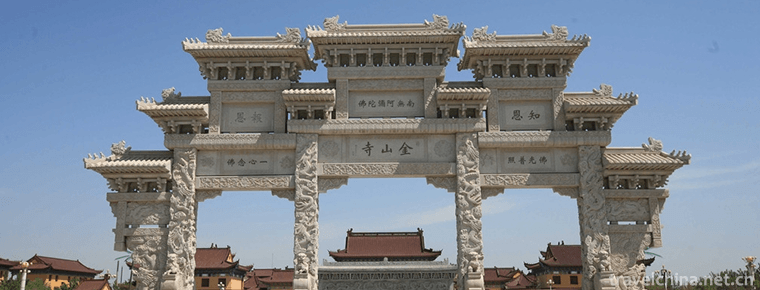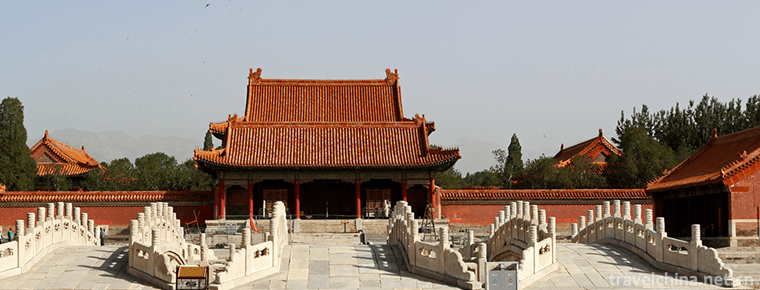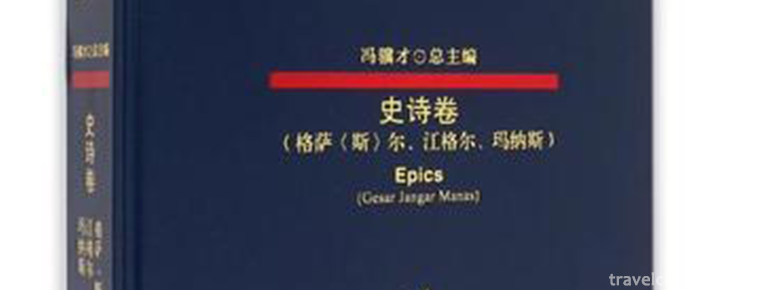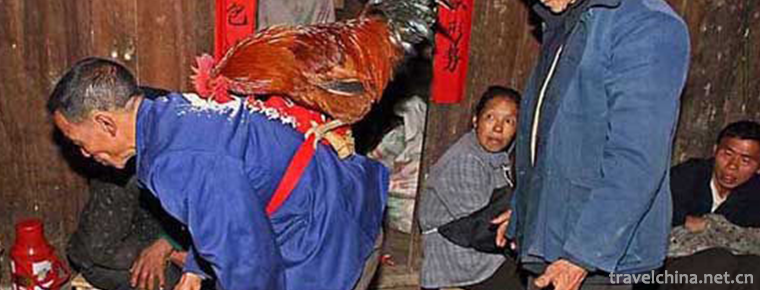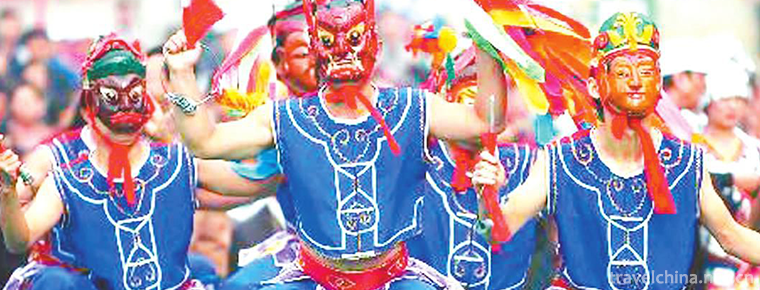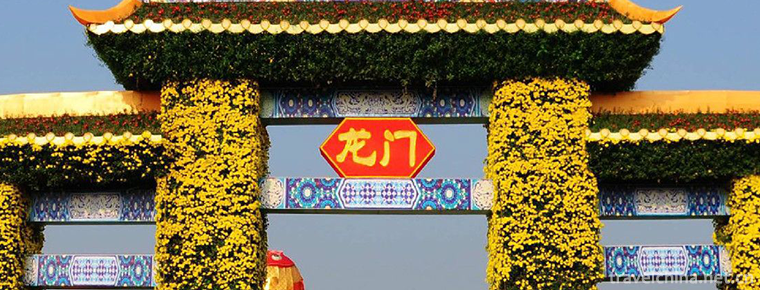Green Tea Production Techniques
Green Tea Production Techniques
Green tea production technology is a national intangible cultural heritage. Luan Guapian is a special kind of green tea. Cucumber seed-like flake-shaped tea is made from local endemic varieties by wrenching, removing tender buds and tea stalks, and through unique traditional processing technology. "Luan Guapian" has a long history and rich cultural connotation. As early as the Tang Dynasty, the "Tea Classic" was known as "Luzhou Lu'an (tea)"; Xu Guangqi, a scientist in the Ming Dynasty, in his book "Agricultural Administration Complete Book", called "Lu'an's piece of tea is the best product of tea"; Li Dongyang, Xiao Xian and Li Shishi in the Ming Dynasty also mentioned many times in "Yong Lu'an Tea", "seven bowls of Qingfeng from Lu'an" and "Lu Yu's legacy of the old classic", giving "Lu'an Gua tablet" a high level. Evaluation.
On June 7, 2008, green tea production technology (Luan Guapian) was approved by the State Council and listed in the second batch of national intangible cultural heritage list.
content
Luan Guapian is one of the top ten famous teas in China. It is an outstanding representative of traditional handmade tea. According to the historical records of Lu'an and the famous items listed by Yuan Mei, a literati in Qing Dynasty in Suiyuan Food List, Lu'an melon slices appeared in the middle of Qing Dynasty and evolved from "green big tea" in Lu'an tea. In the Qing Dynasty, Luan Guapian was listed as a famous tribute.
Luan Guapian Tea is located in the northern foot of the Dabie Mountains, around the Huangchaojian in Yuan District. The natural conditions and environment, such as temperature, light, rainfall, soil and so on, at an altitude of 400-600 meters, are especially suitable for the growth of Luan Guapian tea tree. The best "Luan Guapian" mainly distributes at the top of Qiyunchong Qishan Mountain, Mabu Town, Jinzhai, and 8 townships such as Longmenchong, Shipan Village, Dushan Town, Shibanchong Township and Hejiawan, Shipodian Township, Yuan District.
The picking process of Lu'an melon slices is divided into seven processes: picking, wrenching, frying pan, frying pan, pulling wool fire, pulling small fire and pulling old fire, among which the most distinctive one is "pulling old fire". "Laolaohuo" is the last baking, which has the greatest impact on the formation of special color, fragrance, taste and shape of Luan melon slices. Because the production technology of Luan Guapian is very difficult and the process is complex, especially the technology of pulling old fire is not a day's work, young people are reluctant to learn, and there are few successors. Luan melon slices are suitable for small and medium-sized leaf species in Dushan, Luan. Due to the introduction of other tea varieties, and the slow progress in the purification and rejuvenation of small and medium-sized tea varieties in Dushan, the degradation of suitable varieties is serious, and the original flavor of Luan melon slices is almost extinct, facing an endangered situation, which urgently needs to be protected.
The chemical constituents of Luan Gua tablets have very healthy effects. Its chemical composition is composed of 3.5-7.0% inorganic substances and 93-96.5% organic substances. There are about 27 inorganic mineral elements in tea, including phosphorus, potassium, sulfur, magnesium, manganese, fluorine, aluminium, calcium, sodium, iron, copper, zinc, selenium and so on. The main organic compounds in tea are protein, lipid, carbohydrate, amino acid, alkaloid, tea polyphenol, organic acid, pigments, aroma components, vitamins, saponins, sterols and so on.
Taste
Tea contains 20-30% leaf protein, but only about 3.5% can be dissolved in tea soup. Tea contains 1.5-4% free amino acids, more than 20 kinds, most of which are essential amino acids for human body. Tea contains 25-30% carbohydrates, but only 3-4% can be dissolved in tea soup. Tea contains 4-5% lipid, which is also necessary for human body.
Tea tasting embodies the social spirit of elegance, tranquility and harmony. There are four steps in the general tasting of Luan Guapian: tasting tea: observing the quality of tea from the color, tenderness and shape of dry tea. Smell: Appreciate the fragrance of tea after brewing. Guantang: Appreciate the process of ups and downs and stretching of tea during brewing, the dissolution of tea and the posture of tea after quiet brewing. Taste: Appreciate the color and taste of tea soup. Before drinking, it should be brewed with traditional methods such as "high-impact, low-pour, foam-inclusion, shower cover". Drinking, with the right index finger, thumb to hold the edge of the cup, middle finger to hold the bottom of the cup, jokingly known as "Sanlong Huding" tea taster in frying, focusing on the soup. For the color, aroma and taste of tea soup, color is the main form.
distinguish
Common sense of purchasing Luan melon slices. In normal temperature years, new tea can be produced within ten days before the grain rain, and tea plants with rich nutrition should be produced within a few days before and after the grain rain. Choosing and tasting "Lu'an melon slices" should usually grasp the following points: namely, considering the "color, aroma, taste and shape" of tea from two angles of dry tea and brewing tea.
One is the appreciation of dry tea. Watch color: through the wait-and-see should have iron green (deep green) emerald, tender, color and luster consistent, visible baking in place. Smell fragrance: The fragrance of tea, especially the fragrance or fragrance of burning chestnut, is superior by smelling; the explanation with grass flavor lacks the skill of stir-frying. Chewing taste: through careful chewing should have a sweet taste of bitter end, bitter in the thorough sweetness, a slight rinse with clean water after a refreshing and sweet feeling.
Appearance: Through inspection, the roll should be straight, similar in length, and uniform in thickness. It can be seen that the shape and size are the same and the stir-frying work is in place.
The second is the taste of dry tea hair soup. White porcelain cups (bowls) are commonly used for tea sets. Spring water or deep well water is preferred, and mineral water or pure water with near-neutral PH value is suitable without conditions. According to the capacity of tea set, put in the right amount of tea, light and moderate, not too much. In order to avoid the original fragrance of a piece of tea flowing away, some people advocate using boiled water to high-flush, slow collection, from pot to 2/3 of the tea set to cover for a moment (the new tender tea should not be fully covered). A moment later, you can taste it. The steps are as follows: First, smell the fragrance. Close to the mouth of the cup or bowl or mouth, feel whether there is a long tea fragrance; experience the fragrance of tea with its fragrance concentration. The second is to look at the color. The cup cover is used to help the tea to see the color of the soup. Generally, the green soup is clear and refreshing, without any turbidity. The color of its leaves is generally a new tea made from tea grass ten days before the grain rain. After soaking, the color of its leaves is light green and blue, which is not symmetrical. Close to the grain rain or after the grain rain, the leaf color is generally green or dark green, and symmetrical, the tea soup is correspondingly thicker, if the time is a little later, green and dark. And taste it. Usually, after two sips of tea soup slowly, then sip it fine and delicate. Normally, there are slightly bitter, cool and silky sweetness. The slices of tea made from nutritious leaves and brewed tea soup can make you feel the softness of the tea soup obviously. Fourth, look at its shape. After boiling water and making soup, dry tea first floats on the upper layer. With the opening soup of the leaves, the leaves one by one sink to the bottom of the cup and bowl one by one. The original strip shape was developed into leaf shape. The size of the blade was almost the same, and the sheets were superimposed.
"Lu'an slice tea" is one of the ten famous tea in China, and also one of the green tea series. It occupies the most important position in the green tea family. According to the results of modern pharmacological research, green tea is conducive to the prevention and suppression of cancer, the health treatment of cardiovascular diseases, the reduction of weight and the clearance of intestinal fat, the clearance of heat and dryness, detoxification and beauty.
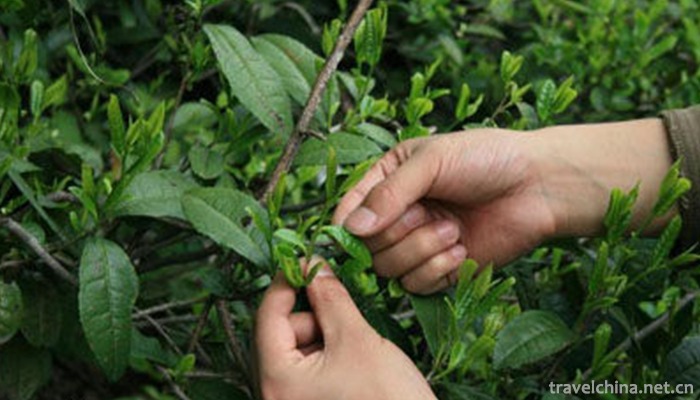
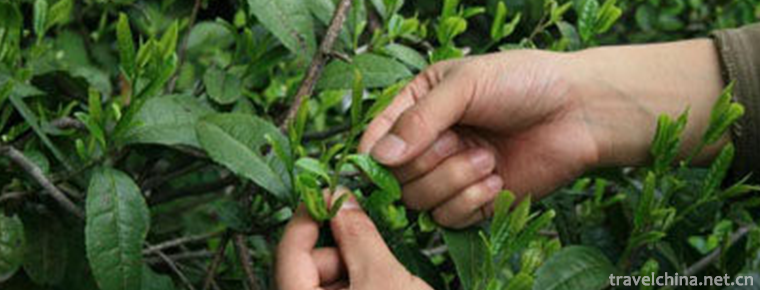
Green Tea Production Techniques
-
Island Jinshan Temple
Jinshan Temple, located in the northern part of Qingyun County, Dezhou City, Shandong Province, was built in the Sui Dynasty and flourished in the Tang Dynasty. It is said that the island Jinshan Temp
Views: 145 Time 2019-01-13 -
Jinan International Park Expo
Jinan International Park Expo Park covers an area of 5176 Mu and is located in Jinan University Science Park. The Lake area is 1440 mu. It is the largest land park in China
Views: 144 Time 2019-01-21 -
Western Royal Tombs of the Qing Dynasty
Xiling Tomb of Qing Dynasty is located at the foot of Yongning Mountain, 15 kilometers west of Yixian Town, Baoding City, Hebei Province, more than 120 kilometers away from Beijing
Views: 239 Time 2019-02-07 -
Gesar
Gesar (Sr) came into being in the second half of the 17th century and spread among the Mongolian people in Mongolia, Liaoning, Jilin, Heilongjiang, Qinghai, Gansu, Xinjiang and other provinces and reg
Views: 342 Time 2019-05-01 -
Hua Chao Opera
Huachao Opera, a local traditional drama in Zijin County, Guangdong Province, is one of the national intangible cultural heritage.
Views: 159 Time 2019-05-04 -
Maonan Fat Cover
"Fat set" is the general name of Maonan people's vow-making activities. It prevailed in the Ming and Qing Dynasties. At the beginning, Maonan people used Nuo rituals to sacrifice the heavens
Views: 109 Time 2019-05-27 -
Nuo opera
Nuo Opera originated from Fang Xiangshi's exorcism activities in Shang and Zhou Dynasties. After Han Dynasty, it gradually developed into a ritual ceremony with strong entertaining color and opera mus
Views: 272 Time 2019-06-08 -
Xiaolan Chrysanthemum Club
Xiaolan Town, located in the middle of the Pearl River Delta, is an important town in Zhongshan City, Guangdong Province. Xiaolan has the reputation of "Chrysanthemum City". Chrysanthemum cu
Views: 294 Time 2019-07-06 -
Hunter peak
Hunter peak is located in the Shuangqiao gully of Siguniang mountain, with an altitude of 5360 meters and adjacent to Jianzi mountain. The two peaks stand shoulder to shoulder, with a huge stone pillar in the middle
Views: 239 Time 2020-11-05 -
Deyang City Construction
In January 2020, the science and Technology Department of Sichuan Province and the provincial development and Reform Commission approved to support Deyang and other six cities to carry out the construction of provincial innovative cities.
Views: 300 Time 2020-12-14 -
Neijiangs first industry
In 2019, the sown area of grain crops in Neijiang is 309600 ha, an increase of 0.3% over the previous year; the sown area of oil crops is 79900 ha, an increase of 0.4%; and the sown area of vegetables is 78100 ha, an increase of 2.3%. The total grain output
Views: 317 Time 2020-12-16 -
Meishan City logo
Meishan City logo is composed of ancient Chinese tile pattern and Dongpo head portrait, which shows a feeling of ancient historical traces and reflects the ancient culture of Meishan. From the design to the font are used a simple style, using the combinatio
Views: 337 Time 2020-12-18
